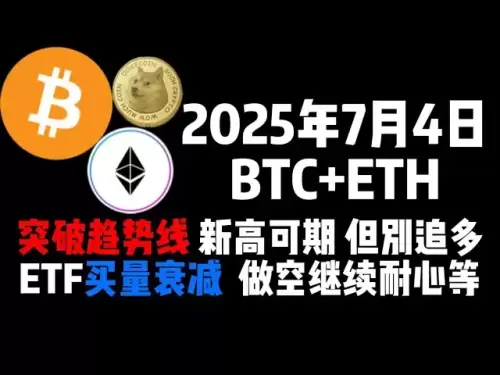-
 Bitcoin
Bitcoin $109,058.5326
-0.67% -
 Ethereum
Ethereum $2,553.3914
-1.56% -
 Tether USDt
Tether USDt $1.0004
0.01% -
 XRP
XRP $2.2311
-2.72% -
 BNB
BNB $658.4030
-0.74% -
 Solana
Solana $150.4006
-2.89% -
 USDC
USDC $1.0000
0.01% -
 TRON
TRON $0.2870
1.26% -
 Dogecoin
Dogecoin $0.1671
-3.94% -
 Cardano
Cardano $0.5819
-3.67% -
 Hyperliquid
Hyperliquid $38.9110
-4.28% -
 Sui
Sui $2.9262
-3.28% -
 Bitcoin Cash
Bitcoin Cash $481.7213
-4.33% -
 Chainlink
Chainlink $13.3658
-3.40% -
 UNUS SED LEO
UNUS SED LEO $9.0445
0.35% -
 Avalanche
Avalanche $18.0828
-3.99% -
 Stellar
Stellar $0.2400
-2.09% -
 Toncoin
Toncoin $2.8111
-3.00% -
 Shiba Inu
Shiba Inu $0.0...01157
-3.51% -
 Litecoin
Litecoin $87.9190
-3.80% -
 Hedera
Hedera $0.1556
-2.74% -
 Monero
Monero $321.6492
-3.46% -
 Polkadot
Polkadot $3.4434
-4.49% -
 Dai
Dai $0.9999
-0.02% -
 Ethena USDe
Ethena USDe $1.0001
-0.02% -
 Bitget Token
Bitget Token $4.4642
-2.92% -
 Uniswap
Uniswap $7.3673
-3.63% -
 Pepe
Pepe $0.0...09790
-7.15% -
 Aave
Aave $269.7432
-3.24% -
 Pi
Pi $0.4830
-3.91%
What is Sniper Bot?
Sniper Bots are automated trading software used in crypto markets to execute trades at optimal times, maximizing profits by quickly reacting to market opportunities.
Apr 07, 2025 at 10:43 pm

A Sniper Bot is a type of automated trading software used within the cryptocurrency market to execute trades at optimal times, often milliseconds before other traders. These bots are designed to take advantage of new token listings, price fluctuations, and other market opportunities to buy or sell assets quickly and efficiently. The primary goal of a Sniper Bot is to maximize profits by entering and exiting trades at the most advantageous moments, often before the broader market can react.
How Does a Sniper Bot Work?
A Sniper Bot operates by continuously monitoring the cryptocurrency market for specific conditions or triggers that signal a buying or selling opportunity. These triggers can include new token listings on decentralized exchanges (DEXs), significant price movements, or other predefined criteria set by the user. Once a trigger is detected, the bot executes a trade almost instantly, aiming to secure the best possible price before the market adjusts.
- Monitoring: The bot scans multiple exchanges and liquidity pools to identify potential opportunities.
- Triggering: It uses algorithms to detect when a predefined condition is met, such as a new token listing or a price drop.
- Execution: Upon detecting a trigger, the bot places a buy or sell order at the most favorable price available.
- Confirmation: The bot confirms the trade and updates the user's portfolio accordingly.
Types of Sniper Bots
There are several types of Sniper Bots, each designed for different purposes within the cryptocurrency trading ecosystem. Understanding these types can help traders choose the right tool for their needs.
- DEX Sniper Bots: These bots are specifically designed to work on decentralized exchanges like Uniswap or PancakeSwap. They focus on new token listings and aim to buy tokens at the initial listing price before they surge in value.
- Arbitrage Sniper Bots: These bots exploit price differences between different exchanges or liquidity pools. They buy an asset on one platform where it's cheaper and sell it on another where it's more expensive, profiting from the price discrepancy.
- Front-Running Sniper Bots: These bots attempt to execute trades just before large orders are filled, aiming to benefit from the price movement caused by those orders. This type of bot is controversial and often considered unethical or even illegal in some jurisdictions.
Benefits of Using a Sniper Bot
Using a Sniper Bot can offer several advantages to cryptocurrency traders, particularly those looking to capitalize on short-term market movements.
- Speed and Efficiency: Sniper Bots can execute trades much faster than human traders, often in milliseconds. This speed can be crucial in highly competitive markets where every second counts.
- 24/7 Trading: Unlike human traders, Sniper Bots can operate around the clock, ensuring that no trading opportunity is missed, even during off-hours or when the trader is asleep.
- Emotionless Trading: Bots follow predefined algorithms and do not let emotions like fear or greed influence their decisions, leading to more consistent trading outcomes.
- Opportunity Maximization: By quickly identifying and acting on new token listings or price movements, Sniper Bots can help traders maximize their potential profits.
Risks and Challenges of Using Sniper Bots
While Sniper Bots offer numerous benefits, they also come with certain risks and challenges that traders should be aware of.
- Technical Failures: Like any software, Sniper Bots can experience technical issues or bugs that may lead to missed opportunities or incorrect trades.
- Market Volatility: The cryptocurrency market is highly volatile, and even the most sophisticated algorithms can struggle to predict sudden price swings, leading to potential losses.
- Regulatory Risks: In some jurisdictions, the use of certain types of Sniper Bots, particularly front-running bots, may be illegal or subject to regulatory scrutiny.
- Competition: As more traders use Sniper Bots, the competition for the best prices and opportunities increases, potentially reducing the effectiveness of these tools.
Setting Up and Using a Sniper Bot
Setting up and using a Sniper Bot involves several steps, from choosing the right bot to configuring it for optimal performance. Here's a detailed guide on how to get started.
- Choose a Sniper Bot: Research and select a reputable Sniper Bot that aligns with your trading goals. Popular options include Uniswap Sniper Bot, PancakeSwap Sniper Bot, and various arbitrage bots.
- Set Up Your Wallet: Ensure you have a compatible cryptocurrency wallet set up and funded. Most Sniper Bots require you to connect your wallet to the bot's interface.
- Configure the Bot: Access the bot's settings and configure the parameters according to your trading strategy. This may include setting triggers for new token listings, price thresholds, and other criteria.
- Test the Bot: Before using the bot with real funds, run it in a test environment or with a small amount of cryptocurrency to ensure it functions as expected.
- Monitor and Adjust: Once the bot is operational, monitor its performance and make adjustments as needed. This may involve tweaking the settings or updating the bot's software to improve its effectiveness.
Frequently Asked Questions
Q: Can Sniper Bots be used on centralized exchanges?
A: While Sniper Bots are primarily designed for decentralized exchanges, some bots can be adapted for use on centralized exchanges. However, the functionality and effectiveness may vary, and traders should check the bot's compatibility before use.
Q: Are Sniper Bots legal to use?
A: The legality of Sniper Bots depends on the jurisdiction and the specific type of bot. While most DEX and arbitrage bots are legal, front-running bots may be considered unethical or illegal in some regions. Always check local regulations before using a Sniper Bot.
Q: How much does it cost to use a Sniper Bot?
A: The cost of using a Sniper Bot can vary widely, from free open-source options to premium bots that require a subscription or one-time payment. Additionally, transaction fees on the exchanges where the bot operates will also apply.
Q: Can Sniper Bots guarantee profits?
A: No, Sniper Bots cannot guarantee profits. While they can increase the chances of capitalizing on market opportunities, the cryptocurrency market's volatility means that losses are always possible. Traders should use Sniper Bots as part of a broader trading strategy and never invest more than they can afford to lose.
Disclaimer:info@kdj.com
The information provided is not trading advice. kdj.com does not assume any responsibility for any investments made based on the information provided in this article. Cryptocurrencies are highly volatile and it is highly recommended that you invest with caution after thorough research!
If you believe that the content used on this website infringes your copyright, please contact us immediately (info@kdj.com) and we will delete it promptly.
- Bitcoin's Pattern Break: Are HODLers the Key to the Next Surge?
- 2025-07-04 18:50:12
- Meme Coins, Crypto Tokens, and Joke Creation: A New Yorker's Take
- 2025-07-04 18:30:12
- Level Up Your Lawn: Grass Seeds, Garden Experts, and the £1 Coin Hack!
- 2025-07-04 18:30:12
- Sui Price Surges Amid Lion Group's Treasury Move: What's Next?
- 2025-07-04 16:30:13
- BLAST Price Bounces Back After Token Unlock: Is the Rally Real?
- 2025-07-04 17:10:16
- Wormhole, Coinbase, and Interoperability: A New Era for Crypto?
- 2025-07-04 16:30:13
Related knowledge
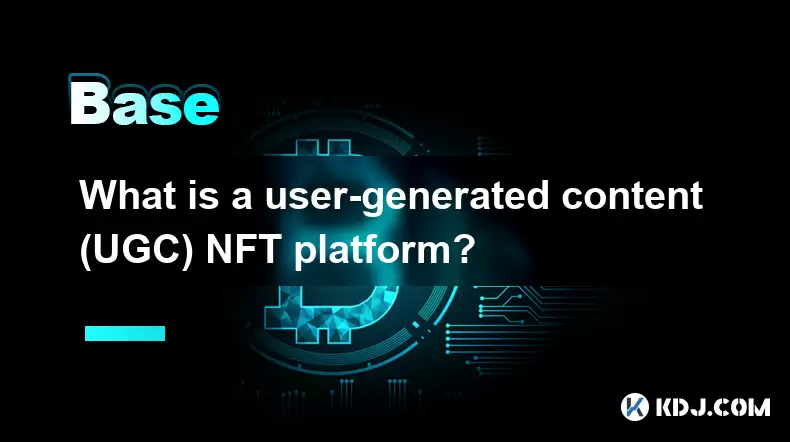
What is a user-generated content (UGC) NFT platform?
Jul 04,2025 at 01:49pm
Understanding the Concept of a UGC NFT PlatformA user-generated content (UGC) NFT platform is a digital marketplace or ecosystem where users can create, mint, and trade non-fungible tokens (NFTs) that represent ownership of original digital content they produce. Unlike traditional NFT platforms where creators often include professional artists or develo...
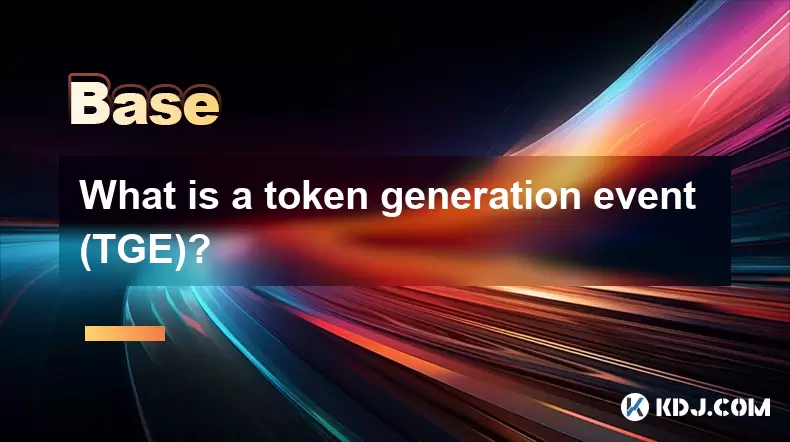
What is a token generation event (TGE)?
Jul 04,2025 at 07:14am
Understanding the Basics of a Token Generation Event (TGE)A Token Generation Event (TGE) refers to the process through which a blockchain project creates and distributes its native tokens to investors, participants, or stakeholders. This event is often associated with new cryptocurrency projects launching on platforms like Ethereum, Binance Smart Chain,...
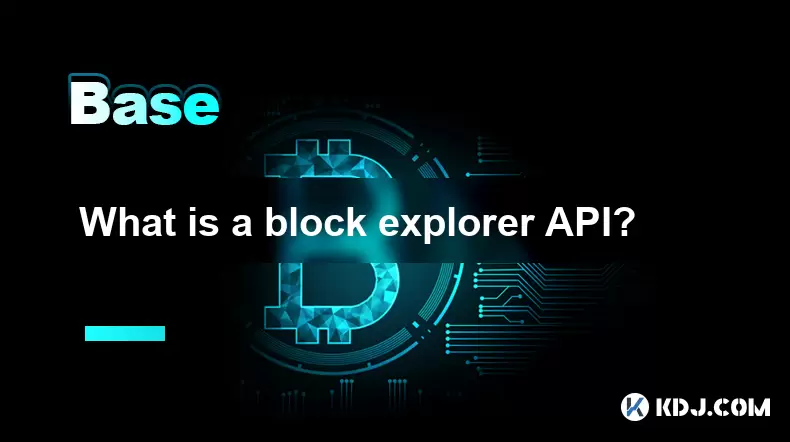
What is a block explorer API?
Jul 04,2025 at 05:07am
Understanding the Role of a Block Explorer APIA block explorer API is a crucial interface that enables developers and users to interact programmatically with blockchain data. Unlike traditional APIs used in web services, a block explorer API specifically provides access to blockchain-related information such as transaction details, wallet balances, bloc...
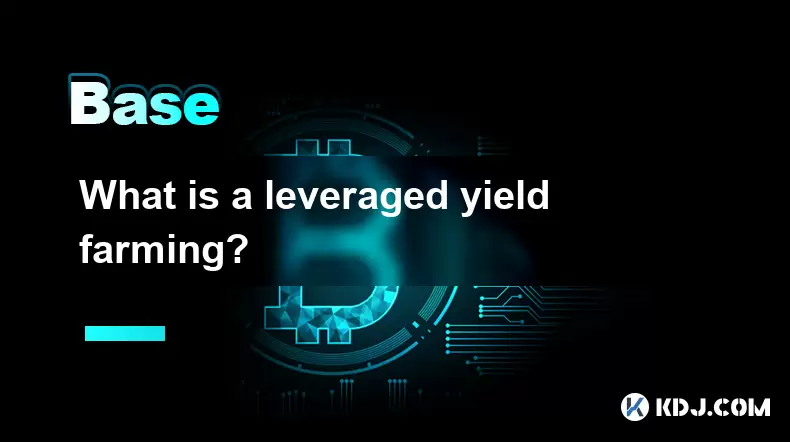
What is a leveraged yield farming?
Jul 04,2025 at 09:36am
Understanding Leveraged Yield FarmingLeveraged yield farming is a more advanced form of yield farming, which itself is a popular method in the decentralized finance (DeFi) ecosystem to earn returns by providing liquidity to various protocols. In traditional yield farming, users deposit tokens into a DeFi platform and earn rewards in return, often in the...
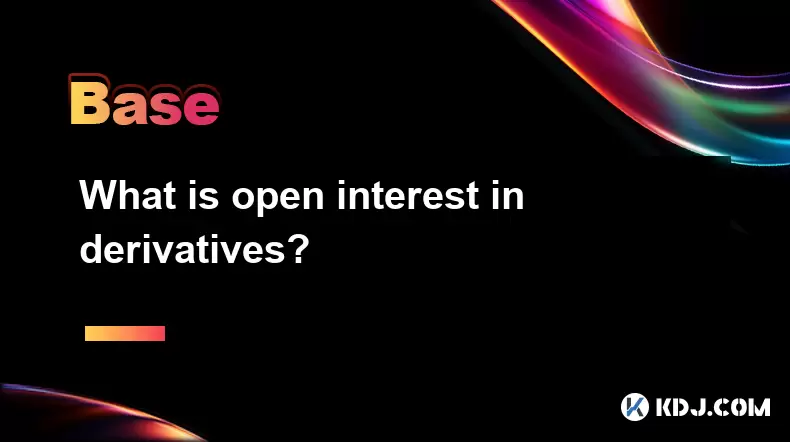
What is open interest in derivatives?
Jul 03,2025 at 02:49pm
Understanding Open Interest in DerivativesOpen interest is a critical metric used in the cryptocurrency derivatives market, particularly when analyzing futures and options contracts. It represents the total number of outstanding contracts that have not been settled or closed by either party involved. Unlike trading volume, which counts all trades made i...
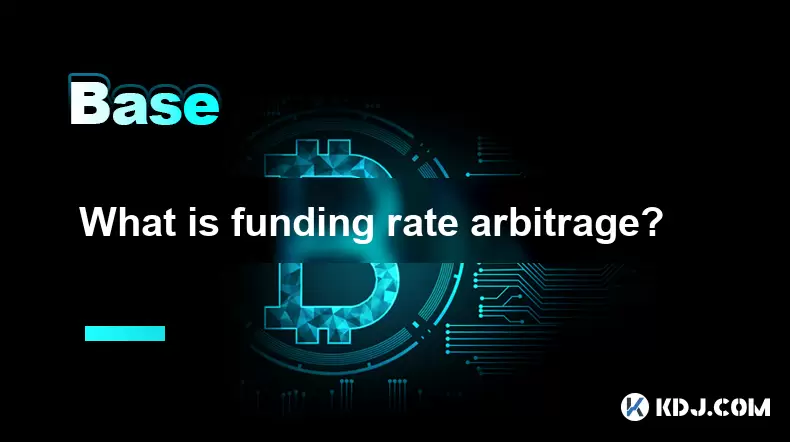
What is funding rate arbitrage?
Jul 04,2025 at 11:43am
Understanding Funding Rate Arbitrage in the Cryptocurrency MarketFunding rate arbitrage is a trading strategy employed by crypto traders to exploit differences in funding rates across various perpetual futures exchanges. In perpetual contracts, funding rates are periodic payments made between long and short traders depending on whether the price of the ...

What is a user-generated content (UGC) NFT platform?
Jul 04,2025 at 01:49pm
Understanding the Concept of a UGC NFT PlatformA user-generated content (UGC) NFT platform is a digital marketplace or ecosystem where users can create, mint, and trade non-fungible tokens (NFTs) that represent ownership of original digital content they produce. Unlike traditional NFT platforms where creators often include professional artists or develo...

What is a token generation event (TGE)?
Jul 04,2025 at 07:14am
Understanding the Basics of a Token Generation Event (TGE)A Token Generation Event (TGE) refers to the process through which a blockchain project creates and distributes its native tokens to investors, participants, or stakeholders. This event is often associated with new cryptocurrency projects launching on platforms like Ethereum, Binance Smart Chain,...

What is a block explorer API?
Jul 04,2025 at 05:07am
Understanding the Role of a Block Explorer APIA block explorer API is a crucial interface that enables developers and users to interact programmatically with blockchain data. Unlike traditional APIs used in web services, a block explorer API specifically provides access to blockchain-related information such as transaction details, wallet balances, bloc...

What is a leveraged yield farming?
Jul 04,2025 at 09:36am
Understanding Leveraged Yield FarmingLeveraged yield farming is a more advanced form of yield farming, which itself is a popular method in the decentralized finance (DeFi) ecosystem to earn returns by providing liquidity to various protocols. In traditional yield farming, users deposit tokens into a DeFi platform and earn rewards in return, often in the...

What is open interest in derivatives?
Jul 03,2025 at 02:49pm
Understanding Open Interest in DerivativesOpen interest is a critical metric used in the cryptocurrency derivatives market, particularly when analyzing futures and options contracts. It represents the total number of outstanding contracts that have not been settled or closed by either party involved. Unlike trading volume, which counts all trades made i...

What is funding rate arbitrage?
Jul 04,2025 at 11:43am
Understanding Funding Rate Arbitrage in the Cryptocurrency MarketFunding rate arbitrage is a trading strategy employed by crypto traders to exploit differences in funding rates across various perpetual futures exchanges. In perpetual contracts, funding rates are periodic payments made between long and short traders depending on whether the price of the ...
See all articles

























